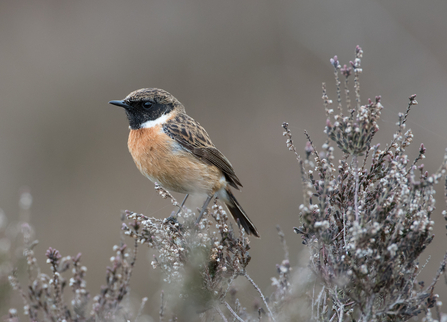We had been watching these little birds visit our gardens for weeks and had many conversations attempting to work out what species they were. We finally managed to get a half decent photo and sent this to the ERCCIS to confirm what we hoped – that we had stonechats unbelievably visiting and feeding in our garden.
To our complete delight, the record was validated. We were the proud garden guardians of at least two stonechats. I immediately uploaded the record to ERCCIS via my ORKS app to ensure it was officially recorded. To learn more about how you can share your sightings through ORKS, watch the video below by Shoresearch Cornwall's Volunteer Co-ordinator Josh:


